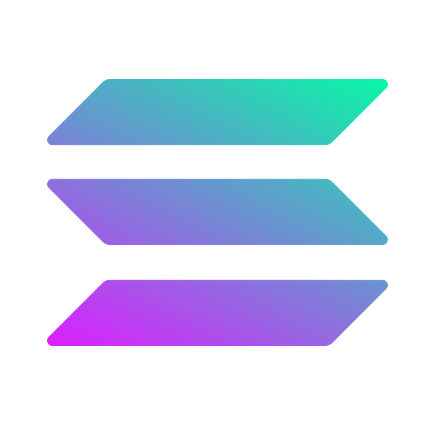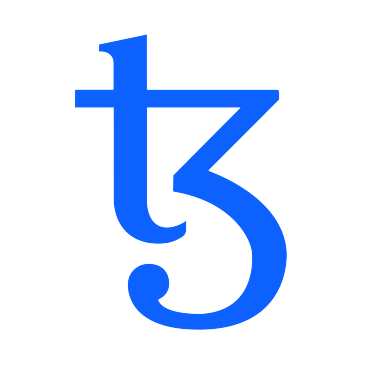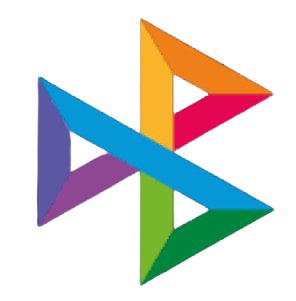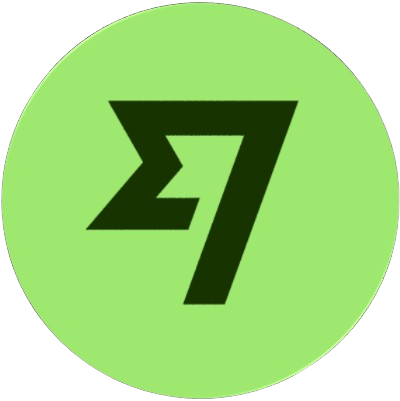Cosmos. History of one cryptocurrency
Conflicting data are published about the beginning of work on the Cosmos project. The generally accepted launch date for the project is 2017, but the first information about the development of the coin goes back to 2014.
About the project
Initially, two organizations participated in the implementation of the Cosmos - the Interchain Foundation and Tendermint Inc. In 2017, the fundraising is completed, which was needed for the first stages of the platforms development. The amount of investments amounted to nearly $ 17,000,000.
It took less than an hour to collect the required amount. Such quick results came as no surprise in the context of the massive ICO craze. In 2018, the team moved to the development stage. During this period, the Inter-Blockchain Communication technology was created, more than 20 test networks were launched. The high speed of development made it possible to enter the cryptocurrency market already in 2019.
The first major success was the creation of the Binance Chain blockchain, which was based on the Cosmos SDK concept. The blockchain has been announced by the largest exchange Binance. The goal of this project was to introduce an alternative market for cryptocurrency exchange in a decentralized format.
As conceived by the developers, the blockchain Space was created to overcome several disadvantages of cryptocurrencies:
Slow blockchain speed. Slowness is inherent in all programs that work using the PoW algorithm. Thanks to the revolutionary Tendermint project, the creators managed to improve speed and scalability.
Incorrect operation of decentralized applications and problems when launching new blockchains. To correct technical flaws, Cosmos uses a modular system with any programming language.
Lack of contact between isolated networks. The Cosmos program promises to establish interaction between networks through the Interblockchain Communication technology. It makes it possible to exchange data between unconnected circuits.
Space has the status of a "third generation" network. The task is to combine disparate blockchain projects into a single system. The creators of the concept gave it the name "Internet of blockchains".
Today, the Cosmos and Tendermint ecosystem consists of dozens of projects. Among the most popular are Sentinel, Hyperledger, OmiseGo, Oracle International Corporation and others.
Opportunities
Today Cosmos ranks 19th in the SMS list. The maximum value of the coin was $ 8.31 in early spring 2019. Investors are investing in this cryptocurrency for a number of technical advantages:
scalability;
Byzantine PoS fault tolerance;
cross-blockchain Bridges;
decentralized scale of the exchange.
Scalability is one of the main growth points of any cryptocurrency project. The development of the Cosmos network is based on the compatibility of networks that have common access zones. The simultaneous operation of zones allows you to increase the throughput threshold of transactions. All zones are equipped with the following registers, protocols and main language.
The Byzantine Failover PoS is the Proof-of-Stake interpretation given by Cosmos to this method of protecting currency, which is based on pBFT. The essence of the method is a combination of techniques used by "proof of ownership" and techniques of the Byzantine consensus on fault tolerance.
The tactic relies on a set of semi-trusted block voting nodes. The correct operation of the protocol is ensured by a quarter of the voting nodes (provided that they are honest). To ensure that all consensus nodes transfer a share of the Atom tokens - in the form of a guarantee. When a node detects malicious intent, it is removed from the system. The atoms that were assigned to it are destroyed.
Cosmos envisions Bridges that run between blockchains. The main function of these bridges is communication. They serve as Zones for the connection of "unconnected" blockchains and verify the transactions being made.
The main blockchain of the Cosmos performs the function of a decentralized exchange. Its task is to check the atomic permutations between the Zones. The decentralization model that is presented by the Cosmos attracts criticism due to the status of the validator. It is assigned to those users who have accumulated the most Atom tokens. The best players keep most of the tokens.
Blockchain components
Blockchain Space consists of four fundamental elements:
Tendermint BFT is an enhanced Proof-of-Stake consensus model. It differs from PoS in the Byzantine tolerance function, due to which the speed of transactions increases. The system works correctly if ¾ nodes follow the rules of the game.
Inter-block communication protocol (IBC) - allows the exchange of cryptocurrency between heterogeneous blockchains without the involvement of intermediaries. The IBCs job is to take over the TCP / IP options that this network model performs on the Internet. Cosmos solves the scalability of the method by introducing two classes of blockchains - Hubs and Zones. Hubs are heterogeneous block chains, and Zones are higher order chains connecting Hubs.
Cosmos Software Development Kit (SDK). The SDK consists of a basic frame with built-in tokens and tools to further customize them. This option allows new blockchains to follow modular or template schemes.
Blockchain Application Interface (ABCI). Responsible for replicating DDaPs in any programming language. Serves as an intermediary between Tendermint Core and Cosmos SDK.
How is created
The operating principle of the Cosmos ecosystem includes two components:
hub - the main blockchain;
zones - independent autonomous networks.
The zones operate on the basis of the Tendermint protocol, which allows you to choose any convenient programming language to develop your project. Flexible blockchain settings help to easily customize them to the needs of a particular user.
The platform does not provide for the mining of coins in the usual sense of this activity. Space endows the participant with one of two possible functions:
Validator - a person who receives an award for mediating transactions.
Delegate - the person who pledges assets to the validator, as a result of which he receives a percentage of the amount. The monthly dividend is ~ 0.5% of the collateral.
Cosmos uses two types of tokens - Atom and Photon. The atom is the "face" of the project. It was used in the ICO process, and today it presents the platform. Acts as the main participant in the conduct of consensus. Photon is a highly specialized token that is used to cover commissions that are charged for transactions.
If transactions are carried out between separate networks, then a prerequisite is communication with the hub. Until the moment of confirmation, the payment amount is frozen by the system. After the transaction is approved, the coins go to the addressees blockchain and burn up in the senders blockchain.
Is Cosmos infinite?
To answer the question about the resources of the Cosmos cryptocurrency, you will need to consider two branches of its development:
combining all functioning blockchains and establishing a connection between them;
development of programs that work with all blockchains that have access to the Cosmos Network.
Thanks to the intermediary function, Cosmos maintains its existence at the expense of the large international exchange company Binance. He can take part in transactions that are made using Bitcoins or any other newest cryptocurrencies. Connected blockchains communicate with each other, exchange information and coins. The task of the network is to verify the authenticity of translations.
Space can be thought of as an exchanger that converts cryptocurrency. Therefore, the question of infinity smoothly flows into the question of the infinity of the currency that is exchanged on this platform. In addition to mediation, the developers are adapting the system for the following areas:
storing information about users (personal or business);
confirmation of the rights to any action (certification of documentation, leaving stamps, concluding transactions);
storing the identification number of property that has legal value.
Applications that will cover all major blockchain networks are created using a special tool. Its task is to create DDaPs that will be assembled from pre-built modules. Users are given the opportunity to create modules on their own. It also provides for the development of new applications from scratch.
Strengths
The advantages of ATOM, which are declared by the creators of the cryptocurrency, include the following:
High scalability. The Tendermint protocol is distinguished by its security and speed. Thousands of transactions pass through it in a second.
Intuitiveness. The Cosmos developers wanted to create a program that even novice users could understand. As a result, they were able to create a more ergonomic and convenient alternative to standard blockchain applications.
Compatibility. Space works using the IBC protocol. This allows data to be transferred between blockchains over the TCP / IP system.
Project support. The Cosmos cryptocurrency was added by top exchanges without prior requests from the creators. The co-founder of Coinbase has invested $ 9,000,000 in this currency.
Perspective. Experts believe that Cosmos will soon be successfully integrated into the blockchain system and will take a leading position in the market. Already in April 2019, this cryptocurrency has risen in price by 89% in just a month.
Application in practice. Space is already supported by many services and applications (including e-Money, IRISnet, Kava, Terra, Binance Chain and others).
Course stability. Space steadily increases its course, regardless of the global market correction. It is not subject to strong daily fluctuations, which makes the coins reliable in the long term.
Further ways of development of the Cosmos depend on the goals set by the developers. Competition on the currency exchange is high, because only strong players become leaders. For successful advancement, the Cosmos needs to get rid of a number of shortcomings. These disadvantages include:
Lack of de facto decentralization. The network is managed by 100 validators. To secure this status, you should regularly increase your assets. Over time, this program can lead to the spread of the monopoly.
Dependence on third-party projects. Users who have begun to understand Space have come to the need to connect integrated applications. The lack of proper self-sufficiency of the project makes it inconvenient to use.
Insecure development. The Cosmos journey to cryptocurrency exchanges took over 5 years. A full-fledged system with the possibility of transactions was planned for 2018. But by the end of 2019, the project was provided only in a test version.
Cosmos in top currencies
At the end of November 2019, the Kosmos cryptocurrency rate is $ 2.96 USD. The project capitalization reaches $ 676,860,952 USD. Since the spring of 2019, it has entrenched itself in the top twenty cryptocurrencies (based on market capitalization), and has been holding its positions ever since.
There are mixed opinions about the future of the Cosmos cryptocurrency. Some analysts believe that global growth is not foreseen, since the "high point" of the currency has already come in 2019 (from 10 cents it has risen to 8 dollars per coin). In the near future, the growth of Space will slow down, it will be proportional to the growth of the entire market.
An increase in the rate should be expected when the rate of Bitcoin, Ethereum and other "giants" of the cryptocurrency market increases. The advantage of the Cosmos system is development due to the growth of competitors. Today, the following projects are the main competitors of the Atom coin:
AION;
Polkadot;
Penta.
They also address issues of efficient data interchange between blockchains. To establish its position, the Cosmos will have to develop new ways of communication between the networks.

 Русский
Русский  English
English  中文
中文  عرب
عرب  Eesti
Eesti  Español
Español  Deutsch
Deutsch  Български
Български  Türkçe
Türkçe  ქართული
ქართული 


























































